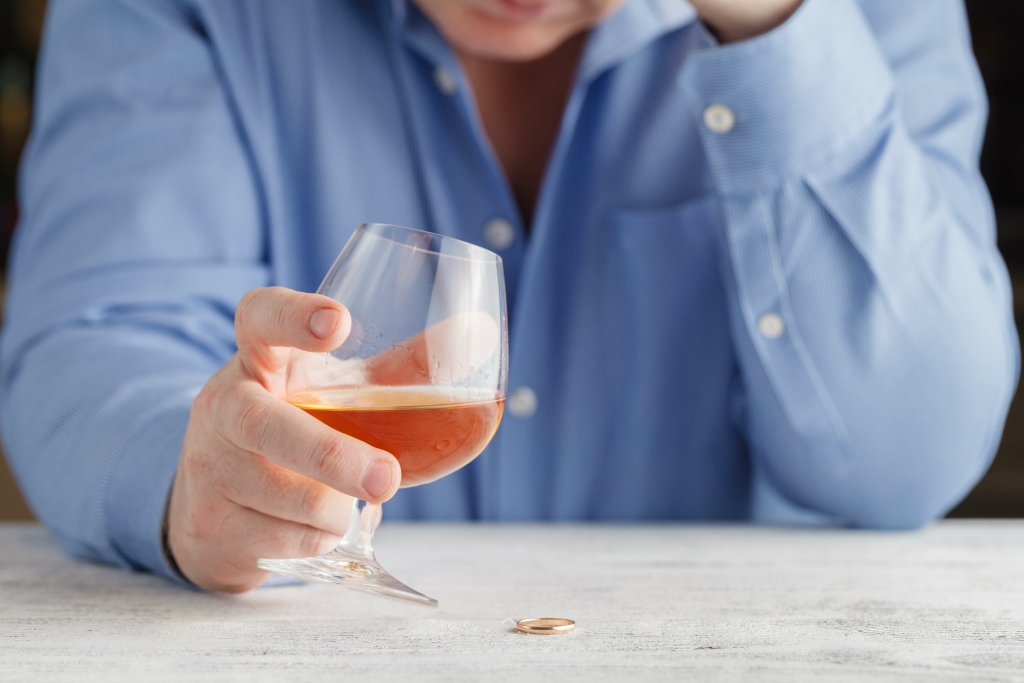TITLE
DESCRIPTION
Marion County Jail uses Measure 110 funds for addiction treatment
Certain medications can be very effective for treating condition-specific pain. Examples include triptans for migraine headaches and gabapentin (Neurontin) or pregabalin (Lyrica) for nerve pain. Compared with a placebo, both buprenorphine alone and buprenorphine in combination with naloxone administered in office-based treatment settings significantly opioid addiction treatment reduce opioid use and opioid cravings (Fudala et al., 2003). Naltrexone is not an opioid but rather is a full antagonist of the mu-opioid receptor and completely blocks the euphoric and analgesic effects of all opioids (Kleber, 2007). Naltrexone does not cause physical dependence, nor does it produce any of the rewarding effects of opioids.

The Pennsylvania court system has not amended its policies to prevent additional violations, however, and as a result is being sued by the Department of Justice. The Department of Justice has taken similar steps in Massachusetts and elsewhere, and the Legal Action Center said it has heard from people all over the country facing situations just like Ms. Mosey’s. Everyone plays an important role in breaking the grip that opioids have on communities and their residents. Used occasionally, corticosteroid injections can relieve pain and inflammation caused by arthritis, sciatica, and other conditions. Chiropractors try to correct the body’s alignment to relieve pain and improve function and to help the body heal itself. It is sometimes used to improve blood circulation, decrease inflammation, and promote healing.
Top doctors in ,
In 2018, lofexidine became the first non-opioid medication approved by FDA for reducing opioid withdrawal symptoms (Doughty et al., 2019; Fishman et al., 2018). Lofexidine could be used to support patients during naltrexone induction or to treat withdrawal symptoms in patients who are not yet ready to begin an opioid agonist medication-based treatment for OUD. Extended-release medications for OUD have the potential to help overcome some of the problems of poor treatment adherence to daily medications. More fundamentally, comparing the effectiveness of sublingual and extended-release buprenorphine formulations would test the assumption that daily dosing is inferior. Methadone is one of the oldest and most effective treatments for opioid addiction, and it is still more difficult for most Americans to obtain than a bag of heroin.
- Nursing homes and other entities that deny services to people suffering from addiction may also be breaking laws, including those meant to protect people from discrimination based on medical conditions or other disabilities.
- A recent systematic review found that relatively few robust studies meeting the criteria for inclusion had investigated behavioral interventions used with naltrexone (Dugosh et al., 2016).
- Health officials should approve those applications as quickly as possible, lawmakers should consider repealing the inmate exclusion act altogether, and treatment providers and prison officials should find ways to work together.
- At this stage, you’re no longer taking the opioids to feel “high” but just to keep your body from going through withdrawal symptoms.
Retention in treatment with naltrexone is dependent on formulation rather than dose. A meta-analysis of trials found that oral, short-acting natrexone was not superior https://ecosoberhouse.com/ to a placebo in retaining people in treatment (Minozzi et al., 2011). It is important to note that since methadone and buprenorphine are opioids, they can be misused.
Can addiction be cured?
Many members benefit from new friendships and sober activities that take place in mutual support groups. Naltrexone is another first-line pharmacological therapy for opioid dependence. The long-acting injection, Vivitrol, is a form of naltrexone that eases compliance.

Because addiction can affect so many aspects of a person’s life, treatment should address the needs of the whole person to be successful. Counselors may select from a menu of services that meet the specific medical, mental, social, occupational, family, and legal needs of their patients to help in their recovery. The Western story of using ibogaine to treat addiction seems to start with one man, Harry Lotsof, who ingested the drug in 1962 and says he woke up free from his heroin addiction. This might sound too good to be true, but ibogaine is known as an “addiction interrupter”, says Dr Tatarsky. People, including some of his patients and a close family member, claim that it resets their nervous system so that they no longer crave the drug they are addicted to. For decades people have claimed to have been cured of their drug addictions—cocaine, opioids and more—after one dose.
Drug overdoses can be prevented by treating addiction as a health condition
He then completed a 60-day in-patient program at the Salvation Army’s Harbor Light Center. Purnell remembers the moment in spring 2020 when he finally, after 15 years, off and on, of getting high, wanted to get sober. Dressed in the same clothes he had been wearing a few days earlier, after surviving a near-fatal overdose that landed him in the hospital, Purnell returned to his aunt’s home, where he had been sleeping on the couch.
- Behavioral health care – Trained providers who help with mental health concerns.
- Ideally, patients on extended-release naltrexone learn quickly not to use the opioids that caused their addictive behaviors, and, after sustained use of the medication, their cravings decline (Krupitsky et al., 2011; Lee et al., 2018; Tanum et al., 2017).
- Wade also explains that changes in the available formulations can help improve its delivery and medication adherence.
- A doctor would then prescribe the woman opioids, and then she would spiral into addiction.
- Most people who successfully cut down or stop using drugs do so after several attempts.
Of course, it’s possible the DEA will reach the same decision on its own. Either way, until a decision is reached, numerous companies whose business model relies on telehealth buprenorphine — and more importantly, thousands of doctors who’ve prescribed and patients who’ve taken the medication without an in-person visit — remain in limbo. Often, it’s a case of people not being able to afford the medications out-of-pocket (they’re expensive). Also, many people can’t access the medications because they live too far from a health clinic or because their primary care doctor either isn’t licensed to prescribe the medication or isn’t trained in addiction medicine. As opioid fatalities soar, some communities are working to untie these knots. Today Raymond’s wait list is at zero, a shift he attributed to state health officials who he said have persuaded many more health clinics in his area to open methadone programs.
The medication has been approved for the treatment of opioid use disorder since 1972, and studies consistently show that for people addicted to opioids, it can help cut the mortality rate in half. But doctors and pharmacies can prescribe and dispense methadone only to pain patients. People struggling with addiction must go instead to specialized clinics called opioid treatment programs. Another knowledge gap in OUD behavioral treatment innovations pertains to the provision of peer support to enhance treatment.
- Painting, board games, playing a musical instrument, woodworking — these and other activities are great alternatives to using drugs.
- Apart from contingency management, it is difficult to say which behavioral intervention will be most effective with a given medication or a given outcome in a given patient.
- Some people may use drugs to help cope with stress and trauma or to help with mental health issues.
- People often use these words interchangeably, but use disorder is the term preferred by the American Psychiatric Society.
- Taking a break from drug use can be a good way to start using less.
Unlike withdrawal from other drugs such as alcohol or benzodiazepines, withdrawal from opioids is uncomfortable but rarely life-threatening. Treatment can include supportive measures to ease symptoms and help ensure the person is safe, including administering methadone or buprenorphine. Early in the process of opioid use disorder, people may take an opioid drug because of the pleasurable effect. A person may take opioids more frequently or at higher doses to restore the euphoria or, as the condition progresses, to avoid withdrawal symptoms. Evidence-based approaches to treating opioid addiction include medications and combining medications with behavioral therapy. A recovery plan that includes medication for opioid addiction increases the chance of success.
Short-term versus long-term effects
The Lifeline’s website at 988lifeline.org also offers helpful resources as well as inspiring stories of hope and recovery. That with-us-or-against-us mentality reflects a broader tendency. “Nonprofits like to say that the solution is 100 percent of what they do and zero percent of what the other group does, and that the only reason they haven’t solved the problem yet is that their budget isn’t big enough,” Dr. Humphreys said. It can be tough to resist such zero-sum thinking, especially when resources are scarce, but setting differences aside may be the key to saving more lives. “But they are real barriers to progress because they take people who should be on the same team and pit them against one another.” If we want to gain ground against addiction, this infighting will have to stop.
Opioid addiction treatment can vary depending the patient’s individual needs, occur in a variety of settings, take many different forms, and last for varying lengths of time. Some people find hypnosis effective in helping them break through their psychological barriers to change. Hypnotherapy can be empowering and relaxing, helping someone feel more in control of their thoughts without drugs. Family therapy can also help family members support the person who wants to quit opioids and help each member become more aware of how they may have inadvertently contributed to difficulties that occurred in the past. Some opioids have such a strong affinity for opioid receptors that they can overcome naltrexone and displace it, allowing them to exert their effects anyways, Wade explains. Creating this barrier of sorts helps individuals to engage with their typical day-to-day activities with less of a drive to pursue opioids and to re-establish healthier, more functional habits.
Articles récents
Commentaires récents
Archives
Catégories
- ! Без рубрики
- 1w
- 1Win AZ Casino
- 1Win Brasil
- 1WIN Casino Brasil
- 1win India
- 1WIN Official In Russia
- 1win Turkiye
- 1winRussia
- 1xbet
- 1xbet apk
- 1xbet arabic
- 1XBET AZ Giriş
- 1xbet Azerbajan
- 1xbet Azerbaydjan
- 1xbet Brazil
- 1xbet Casino AZ
- 1xbet download
- 1xbet egypt
- 1xbet giriş
- 1xbet Kazahstan
- 1xbet Korea
- 1xbet malaysia
- 1xbet Morocco
- 1xbet Online Casino
- 1xbet qeydiyyat
- 1xbet russia
- 1xbet Russian
- 1xbet russian1
- 22bet IT
- AI News
- aviator brazil
- AZ Most BET
- b1bet brazil
- beebet
- Betmotion brazil
- Bookkeeping
- casino
- crazy time
- csdino
- Fair Go Casino
- fortune tiger brazil
- king johnnie
- LeoVegas Finland
- lucky8 France
- mostbet apk
- mostbet az 90
- Mostbet AZ Casino
- Mostbet AZ giriş
- mostbet azerbaijan
- Mostbet Casino AZ
- Mostbet Casino Azerbaycan
- mostbet giriş
- mostbet hungary
- mostbet kirish
- mostbet norway
- mostbet oynash
- mostbet ozbekistonda
- mostbet royxatga olish
- mostbet tr
- mostbet uz
- Mostbet UZ Casino
- Mostbet UZ Casino Online
- Mostbet UZ Kirish
- Mostbet Uzbekistan
- mostbet-ru-serg
- mr jack bet brazil
- Non classé
- pagbet brazil
- Pin UP AZ Online
- pin up azerbaijan
- Pin Up Brazil
- pin up casino
- Pin UP Casino AZ
- Pin UP Casino Online
- Pin UP Online Casino
- Pin Up Peru
- PinUp apk
- PinUP AZ Casino
- pinup Brazil
- slot
- Sober living
- Software development
- sweet bonanza
- Uncategorized
- verde casino hungary
- verde casino poland
- verde casino romania
- Vulkan Casino
- vulkan vegas DE
- vulkan vegas De login
- Vulkan Vegas Germany
- VulkanVegas Poland
- казино
- Форекс обучение
- Форекс партнерская программа
- カジ旅
- コニベット
- ベラジョンカジノ
© Copyright 2016 by NEXSOFTGroupe Scolaire Al Hakim


Laisser un commentaire